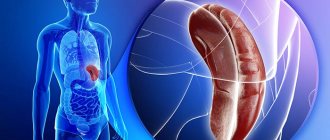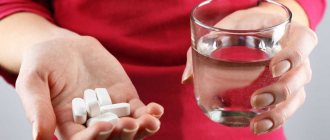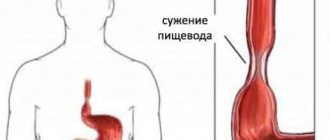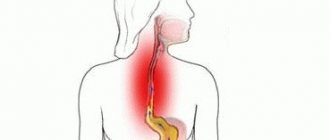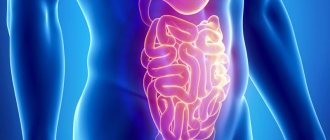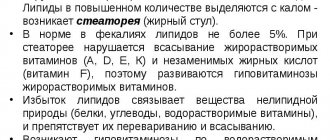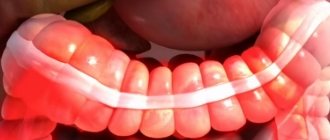Classification
In childhood, latent forms of cholecystitis, characterized by a latent course, are most common. According to the type of damage they are:
- Calculous. Accompanied by the formation of stones in the gall bladder and ducts.
- Stoneless. They occur without cholelithiasis.
In acute inflammation, the catarrhal form is most often diagnosed. Purulent is much less common, but requires urgent treatment in a hospital.
Cholecystitis, which occurs with mild symptoms, is called subclinical.
If exacerbations occur once a year or less, then it is rarely recurrent. Inflammation that provokes 2 or more attacks per year is considered often recurrent.
Depending on the severity of the course, the following degrees of chronic cholecystitis are distinguished:
- light;
- moderate;
- heavy;
- complicated;
- uncomplicated.
Prolonged lack of treatment leads to the spread of the pathological process to neighboring tissues. If the bile ducts are affected, the pathology is called cholecystocholangitis. If the liver is involved - hepatocholecystitis.
Diet
With chronic cholecystitis, children need to eat in small portions, but often. The main emphasis when compiling a diet should be on fresh vegetables, fruits, cereals and dairy products. However, the milk must be skim, that is, skimmed (0.5%). Proteins and healthy carbohydrates are allowed, but fat intake should be limited.
During an acute attack of the disease, the child completely loses his appetite, which corresponds to the needs of the body at the moment, since fasting is beneficial for cholecystitis. At this time, you need to give your baby a warm drink to help remove pathogenic microbes and their waste products from the body.
Provoking factors
The most common cause of the disease is infection. Most often these are pathogenic or conditionally pathogenic representatives of the bacterial flora:
- coli;
- Klebsiella;
- streptococcus;
- staphylococcus and others.
Viruses, fungi and protozoa infect the gallbladder much less frequently. Microorganisms enter the organ through the intestines or through the bloodstream from distant sources of infection.
Often chronic cholecystitis occurs against the background of:
The precursors of the disease can be intestinal infections, for example, salmonellosis or dysentery. Other causes of gallbladder inflammation include:
- parasitic diseases: opisthorchiasis, ascariasis, enterobiasis;
- congenital anomalies of the organ: kinks, structural changes;
- pathologies of other digestive organs: gastroduodenitis, colitis, Crohn's disease;
- changes in the composition of bile;
- biliary dyskinesia;
- disruption of the blood supply to the organ;
- gallstones.
A common provoking factor is a violation of the diet, namely the abuse of foods containing a lot of “fast” carbohydrates, overeating or too long intervals between meals. Failure to adhere to the diet causes an exacerbation of the disease.
In some patients, pathology develops due to:
- frequent worries;
- autonomic disorders;
- poisoning;
- allergies;
- sedentary lifestyle or excessive physical activity;
- abdominal injuries;
- weak immunity.
Diabetes mellitus and other endocrine pathologies lead to metabolic disorders, changes in the composition of bile, the formation of stones and other negative changes in the body that can provoke inflammation of the gallbladder.
Causes of cholecystitis in children
Symptoms of cholecystitis in children
It is quite difficult to suspect a pathology based on a child’s complaints. The explanations for this are as follows:
- not all children are able to accurately describe their feelings;
- in 15% of cases the pathology occurs hidden;
- Sometimes inflammation of the gallbladder is disguised as other diseases, for example, rheumatism, pneumonia, pathologies of the urinary tract and others.
An exacerbation of the disease occurs with pronounced symptoms and severe pain. The chronic form is characterized by mild manifestations or their complete absence.
The most common complaints during exacerbation of catarrhal cholecystitis:
- severe pain on the right under the ribs;
- bitterness in the mouth;
- nausea;
- vomit;
- flatulence;
- belching;
- stool liquefaction;
- increased body temperature;
- chills and cold sweat;
- headache;
- irritability;
- insomnia.
The pain intensifies with walking and other physical activities. It can be paroxysmal or aching. It becomes more pronounced when the diet is violated, usually 1–2 hours after consuming prohibited foods.
The clinical picture of calculous cholecystitis depends on the size of the stones. Small formations leave the organ on their own without disturbing the flow of bile. Large ones lead to blockage of the bile ducts, damage to their walls, suppuration and other unpleasant consequences.
Violation of the outflow of bile is manifested by the following symptoms:
- yellowing of the skin, sclera and mucous membranes;
- high body temperature;
- frequent vomiting with or without bile;
- fever;
- dyspeptic disorders.
The pain during exacerbation of calculous inflammation is quite severe. The child behaves restlessly and turns around in bed for a long time, trying to find the most comfortable position. The skin becomes pale and acquires an earthy or yellowish tint. On examination, pronounced tension in the abdominal wall is noted.
Exacerbation of chronic cholecystitis often disrupts the functioning of other digestive organs. Against this background, pancreatitis may develop, aggravating the course of the disease and its symptoms.
Symptoms
one of the symptoms is discomfort in the right side
Latent and chronic forms of the disease are more common in children. With latent, there are no characteristic signs. The child often has headaches, gets tired quickly, sleeps poorly, and has a decreased appetite. Such children are distinguished by pale skin and bruises under the eyes.
The chronic form is expressed in the following symptoms:
- Nausea, bitter belching.
- Flatulence.
- Diarrhea or constipation.
- Loss of weight, appetite.
- Periodic dull pain in the right side.
Exacerbation of chronic cholecystitis occurs in the following cases:
- Eating disorder.
- ARVI.
- Stressful situation.
During an exacerbation, the child experiences the following symptoms:
- Fever.
- Attacks of nausea and vomiting.
- Sharp pain in the right hypochondrium, radiating to the scapula.
- The pain gets worse after eating or exercising.
- Tense abdominal wall.
- Pale skin, dry mouth.
- Painful attacks can last from several hours to several days.
Treatment of cholecystitis in children
If acute inflammation of the gallbladder is suspected, the child should be hospitalized immediately. Otherwise, there is a real threat to his life. It is best to call an ambulance or take the patient to a medical facility yourself.
Painkillers blur the clinical picture and complicate diagnosis, so it is prohibited to use them without consulting a doctor. Before doctors arrive, it is recommended to place a heating pad with cold water or bags of ice on the area of the right hypochondrium. This will slightly reduce inflammation and improve the patient's condition. Thermal procedures will have the opposite effect.
Therapy is carried out in accordance with clinical recommendations. Preference is given to conservative methods. During exacerbation, patients are shown:
- herbal medicines;
- diet therapy;
- drug treatment.
The treatment regimen is selected individually. Most often, children are prescribed:
- antibacterial agents: penicillins, cephalosporins, macrolides;
- anthelmintic drugs based on mebendazole, furazolidone, aminoquinol;
- antispasmodics with drotaverine, papaverine;
- choleretic medications from the group of choleretics or cholekinetics;
- hepatoprotectors containing essential phospholipids, milk thistle extract, rose hips;
- vitamins and microelements;
- mild sedatives.
After normalization of the condition, treatment is supplemented with physiotherapy, gymnastics and mineral waters. If the outflow of bile is impaired, tubages are prescribed. It is better to undergo rehabilitation in sanatoriums that specialize in diseases of the liver and biliary tract.
Diet plays a very important role in recovery. Fasting is recommended for the first 1–2 days after hospitalization. Then compotes, rosehip decoction, and mucous soups are introduced into the patient’s diet. As the condition improves, diet No. 5 according to Pevzner is prescribed.
For any form of illness, it is forbidden to eat:
- roast;
- fat;
- smoked;
- chocolate;
- cakes;
- fresh bread;
- baked goods;
- sausages;
- other junk food.
It is better to give preference to fermented milk products, cereals, low-fat varieties of fish and meat. You can make a steamed protein omelet for your child. For sweets, marmalade, marshmallows, and marshmallows are allowed. Any products with added cocoa should not be eaten.
Surgical treatment is carried out when complications develop that threaten the life and health of the patient. Chronic inflammation of the gallbladder or biliary tract is treated on an outpatient or inpatient basis.
Treatment of cholecystitis in children is carried out mainly on an outpatient basis.
Treatment methods
If a child has an exacerbation and is experiencing serious pain, then you need to put the little one in a horizontal position and call an ambulance. It is not recommended to give your child analgesics, since painkillers can blur the symptoms and make it more difficult for the doctor to diagnose the disease. However, if the pain is very strong, then it is better to give a pain reliever to prevent the occurrence of pain shock.
In most cases, cholecystitis requires conservative treatment methods.
- Taking medications:
- antibiotics (cephalosporins, penicillins or macrolides);
- if there is a parasitic infection, then Vermox or Furazolidone is prescribed;
- hepatoprotective drugs if the liver is affected, namely Geparsil, Essentiale;
- choleretic agent, for example, Holosas;
- antispasmodics to relieve pain and spasms (Drotaverine or Papaverine);
- in the presence of increased anxiety - sedatives;
- vitamin complexes.
It is important to know that medications and their dosage, as well as the duration of medication use, should only be determined by a specialist.
- Carrying out physiotherapeutic procedures:
- mineral water therapy;
- restoration of the body in a sanatorium;
- mud treatment;
- inductothermy;
- paraffin applications;
- ozokerite applications.
After the acute process is removed, the following may be prescribed:
- physical therapy;
- massage;
- ozone therapy.
- Diet:
- consumption of foods prepared by any method other than frying;
- lack of spicy, fatty, salty, pickled, smoked, and fast food in the diet;
- It is important to maintain regular split meals, eating at regular intervals, up to six times a day;
- limiting salt intake;
- lack of cold and hot dishes in the diet.
Recommended:
- lean fish and meat, steamed cutlets;
- dairy products, only low-fat;
- crackers, dried bread made from wheat flour;
- puree, vegetable soup, stewed vegetables;
- porridge cooked in water;
- egg white omelet;
- jelly, compote
Not recommended for use:
- fatty dairy products, fish, fatty meats;
- vegetable, meat, and canned fish;
- rye bread, fresh pastries;
- sweets, chocolate products, confectionery;
- mushrooms, nuts, legumes;
- sour fruits and berries;
- ice cream and soda.
After a course of therapy, it is extremely important to monitor the child’s condition and perform a clinical examination twice a year for two years after recovery.
It is important to know that when signs of cholecystitis appear, it is unacceptable to self-medicate, rely on traditional medicine methods, or give the child herbs to drink. You need to promptly consult a doctor who can prescribe the correct therapy.
conclusions
Timely hospitalization of a patient with acute cholecystitis in most cases ends in recovery. The main thing is to follow clinical recommendations and avoid self-medication. Ignoring the signs of the disease is fraught with disruption of the outflow of bile, the formation of stones and the development of chronic inflammation, which takes much longer and more difficult to treat.
As you know, cholecystitis is a disease of the gallbladder, which is accompanied by an inflammatory process. In addition to the bile duct itself, the bile ducts are also affected, so that the entire bile excretion system is at risk. Experts say that recently this disease has been diagnosed in children. The reasons for this can be both congenital disorders and poor nutrition in the first years of life.
Possible complications
It is often difficult to notice the disease in a child at an early stage. Children cannot always explain their feelings, and for many, the disease can progress without obvious external manifestations. Delayed diagnosis leads to neglect of the disease, which is fraught with dangerous consequences:
- empyema of the gallbladder - filling the organ cavity with purulent contents;
- wall perforation due to gangrenous tissue damage, gallstone breakthrough;
- biliary-dependent pancreatitis;
- effusion of bile into the abdominal cavity and the development of peritonitis.
When the duct is blocked by a stone or tumor, the patient's skin and sclera turn yellow, urine becomes dark and feces light, and body temperature rises. The appearance of such signs signals the development of obstructive jaundice. This is a common complication of calculous cholecystitis.
Symptoms of the disease
- bitter taste in the mouth;
- yellow coating on the tongue;
- the presence of belching and bad breath;
- vomiting and nausea, especially after a heavy meal;
- decreased appetite or its complete absence;
- unstable stool - constipation and disorders alternate with each other;
- a short-term increase in body temperature is possible.
In addition, doctors observe in such children an enlarged liver and painful sensations when they press on it with their fingers. If acute cholecystitis is observed in children, then sharp pain appears in the abdomen, which radiates to the area under the collarbone. You should especially pay attention to these pains if they intensify after running or fast walking, as well as after a heavy meal. In addition to acute pain, manifestations of intoxication and digestive disorders are possible. This state can last several minutes, or can reach two hours. However, it is encouraging that in children the disease rarely expresses itself in an acute form, but a long-term chronic course of the disease can be observed throughout childhood and adolescence.
Acute cholecystitis symptoms and treatment
Acute cholecystitis (cholecystitis acuta) is considered a fairly rare disease in children, accounting for only about 12% of all cases of cholecystitis.
Symptoms of acute cholecystitis
Acute catarrhal cholecystitis is manifested by 3 syndromes: pain, dyspeptic and intoxication.
The pain syndrome is characterized by the following symptoms: severe attacks of pain localized in the right hypochondrium, around the navel and in the epigastric region, lasting from several minutes to several hours. Some children (usually school age) experience diffuse pain throughout the abdomen. Occasionally, pain radiates to the scapula or collarbone. The intensity of pain is determined by the degree of hyperextension of the walls of the gallbladder and ducts, the nature and depth of their inflammation and the spread of the inflammatory process to the peritoneum.
Dyspeptic syndrome is manifested by the following symptoms: nausea and repeated vomiting, sometimes constipation.
Intoxication syndrome is manifested by an increase in body temperature to febrile, chills, significant pallor, sweating, and general restless behavior of the child.
Diagnosis of acute cholecystitis
When examining, pay attention to the pained expression on the child’s face, dryness of the mucous membranes of the mouth and lips, and coated tongue. The most common symptom of cholecystitis is flatulence.
Due to severe pain, the abdomen is inaccessible to palpation, the anterior abdominal wall is tense, the Blumberg-Shchetkin symptom and the cystic symptoms of Kehr, Murphy, Ortner and the Phrenicus symptom are often positive.
At the height of a painful attack, as a rule, there is an enlargement and tenderness of the liver, as well as tachycardia and moderate shortness of breath.
In the peripheral blood there is leukocytosis (10 - 109/l - 12 - 109/l) with a neutrophilic shift and an increase in ESR to 30 - 40 mm/h. Some children exhibit symptoms of an infectious kidney in the form of proteinuria and hematuria.
Acute cholecystitis in children is diagnosed based on:
- rapid development of the disease, accompanied by fever and symptoms of intoxication;
- pain and dyspeptic syndromes;
- the presence of positive cystic symptoms (Kera, Murphy, Ortner) and phrenicus symptom;
- acute inflammatory changes in peripheral blood.
Acute cholecystitis in children is differentiated from acute surgical diseases of the abdominal cavity: acute appendicitis, intussusception, peritonitis, acute pancreatitis. The severity of the symptoms of acute cholecystitis in childhood and the difficulties of diagnosis require dynamic observation by a surgeon, and therefore children with this pathology are usually hospitalized in a surgical hospital.
Treatment of acute cholecystitis
Therapy for acute catarrhal cholecystitis is usually conservative (rest, prescription of antispasmodic and analgesic drugs, detoxification therapy, antibacterial agents, etc.).
Treatment prognosis.
In most cases, the prognosis for treatment of acute cholecystitis is favorable. However, only in 1/3 of patients acute cholecystitis ends in complete recovery, in the rest it transforms into a chronic form. In very rare cases, acute cholecystitis in children occurs as a destructive process (phlegmonous or gangrenous), requiring surgical treatment.
Causes of cholecystitis in children
The following factors can lead to this condition:
- unhealthy diet – spicy, fatty, salty foods, especially considering the age of the baby;
- physical activity that the child is not used to;
- psycho-emotional overload – stress, psychosis, other effects on the nervous system;
- general weakening of the immune system due to other diseases;
- improper diet - lack of fresh, non-heat-treated vegetables and fruits in the diet;
However, quite often attacks of cholecystitis can be caused by parasites, primarily Giardia and worms. From the intestines they enter the bile ducts, and then directly into the gallbladder. The problem is that several worms can block the bile duct, and in the bladder they can irritate its mucous membrane. In addition, we should not forget that the waste products of worms cause severe intoxication in the body.
Our readers recommend
Our regular reader recommended an effective method! New discovery! Novosibirsk scientists have identified the best remedy for recovery after gallbladder removal. 5 years of research. Self-treatment at home! After carefully reviewing it, we decided to offer it to your attention.
Infections that can cause chronic cholecystitis in children also include hepatitis and various intestinal bacteria. In addition to the above factors, cholecystitis can cause disruption of the motor activity of the ducts and bladder, as well as their abnormal development. If parents have symptoms of this disease, children need to be doubly careful.
Possible reasons
Lack of proper nutrition and long intervals between meals can lead to the development of cholecystitis
- The inflammatory process in the gallbladder may be a consequence of the penetration of pathogenic microorganisms into the bloodstream. The initial source of the disease may be an infection affecting the throat, nose or teeth (such ailments can be tonsillitis, sinusitis and caries, respectively).
- Cholecystitis can also develop against the background of influenza and sore throat, salmonellosis and dysentery.
- It may also be the consequences of an altered composition of bile.
- The result of a parasitic infection in the body.
- Abnormal structure of the gallbladder.
- The result of an inflammatory process in other organs of the digestive system in the presence of diseases such as reflux gastritis, gastroduodenitis or pancreatitis.
- It is important to know about the presence of predisposing factors that provoke the development of cholecystitis, in particular in children:
- the presence of an unbalanced diet, the predominance of fats and carbohydrates over fruits and vegetables in the child’s diet;
- lack of timely meals (a situation where equal intervals between meals are not maintained, long breaks between food consumption are especially fraught);
- the presence of endocrine disorders, their consequences in the form of obesity;
- presence of insufficient physical activity;
- regular stressful situations;
- the presence of an allergic reaction to food;
- injuries of the digestive system;
- presence of mental disorders;
- weak immunity.
It is important to know that 30% of acute cholecystitis develops into a chronic form if medical assistance is not provided in a timely manner.
Methods for diagnosing the disease
A preliminary diagnosis can be made by a pediatrician based on a visual examination, based on the identified symptoms and checking for pain in the liver area. However, this is clearly not enough to start treatment, which means there is a need for further research. In order to confirm the initial preliminary diagnosis, it is necessary:
- take a urine and stool test for eggworms to exclude or confirm the presence of parasites;
- conduct a general blood test and blood biochemistry;
- undergo an ultrasound examination of the gallbladder;
- in special cases, duodenal intubation may be necessary - inserting a probe into the duodenum. However, given the discomfort that the child receives in this case, this study is carried out only in emergency cases.
Usually, the first three tests are enough to confirm the presence of this disease in the baby and approach the prescription of therapy responsibly.
Diagnostics
In order to differentiate cholecystitis from other diseases of the digestive organs, you must definitely contact a gastroenterologist and undergo a range of laboratory tests:
- a general blood test to assess the child’s condition;
- general urine test to exclude acute inflammation of the appendix and kidneys;
- Ultrasound of the abdominal cavity to assess the size, shape of the bladder, the thickness of its walls, analyze contractility and identify stones;
- x-ray of the liver and biliary tract or cholecystography to assess motility and rate of bladder emptying;
- biochemical blood test to study the amount of enzymes and the condition of the liver;
- stool analysis to exclude helminths.
Sometimes, for diagnostic purposes, duodenal intubation is prescribed, during which portions of bile are obtained and examined in the laboratory. Cholecystography is prescribed for children only according to the decision of the attending physician.
How to treat cholecystitis in children?
The good news is that the presence of cholecystitis in children can be dealt with at home, without going to hospital. However, during the acute stage of the disease it will hardly be possible to do without antibiotics. They are joined by choleretic drugs, antispasmodics, tubazhi according to Demyanov, as well as all kinds of herbal remedies, which, by their properties, can participate in the regulation of bile metabolism. Particular attention should be paid to getting rid of parasites, especially if they have been identified. What remedies to use - pharmaceutical, folk or homeopathic - is up to the baby’s parents to decide, while listening to the doctor’s advice. As for additional factors that contribute to a speedy recovery, you must follow the following rules:
- the child should sleep at least 8-10 hours a day, including naps if the baby is still a preschooler;
- daily walks in the fresh air are necessary, preferably in places where there is little traffic;
- food should be gentle (fractional and light), with a large inclusion of fresh vegetables and fruits;
- restrictions on strong physical activity, exemption from sports.
A disease of the gallbladder accompanied by an inflammatory process is called cholecystitis. In recent years, it has become increasingly common in children. It is very rare that only the gallbladder is affected. Usually the bile ducts and even the entire biliary system are affected.
Signs
If this disease is present, the child develops:
- Bitter taste in the mouth;
- Belching with the smell of a rotten egg;
- Bad breath;
- Nausea, often vomiting;
- Decreased appetite or lack thereof;
- Unstable stool, that is, alternating constipation and diarrhea;
- Heat.
External signs are accompanied by internal symptoms - enlargement of the liver and its pain when pressed.
Clinical picture
According to the severity of the inflammatory process, cholecystitis can be catarrhal (superficial inflammation of the gallbladder tissue), phlegmonous (purulent form) and necrotic (gangrenous with cell death). The last two forms develop extremely rarely in children.
Based on the symptoms that appear, parents may suspect the development of cholecystitis in their baby, and the doctor will make a diagnosis after examination and testing.
| First signs | Reliable symptoms |
|
|
The clinical picture is mainly manifested by pain in the right hypochondrium, which at first may occur in periods lasting a couple of minutes or several hours, but as the disease progresses, attacks become more frequent, and the patient feels pain constantly.
Types of chronic disease
Chronic cholecystitis in children has varieties that differ in the form of their course. There are catarrhal and purulent forms of the disease. The catarrhal form is characterized by thickening and compaction of the wall of the gallbladder, and its mucous membrane atrophies. With purulent cholecystitis, all layers of the walls are affected, areas with abscesses appear, which cause exacerbations. With this form of the disease, the walls of the gallbladder thicken, and in some places formations similar to polyps and ulcers appear. When they become covered with connective tissue, scars are formed, and possibly adhesions with other organs.
Manifestation of the disease
Acute cholecystitis in children has a sudden, acute onset, often at night. The child notes unbearable pain in the right hypochondrium and epigastric region. The baby is worried and tries to find a certain position in bed that will reduce the feeling of pain. The child experiences repeated vomiting and bile in the vomit.
Symptoms of cholecystitis in children of primary school and preschool age are vague (uncertain), which causes difficulties in diagnosis. In adolescents, the pain syndrome is pronounced. Pain occurs due to difficulty in the outflow of bile from the bladder. The pain irradiates to the right side of the lower back and spreads throughout the entire abdominal cavity. The tongue is dry and coated, the temperature rises to 39 degrees.
In more than 50% of patients, the onset of cholecystitis is characterized by mild symptoms: periodic minor exacerbations are followed by periods of remission. Excessive physical activity, frequent dietary errors, and psychological disorders contribute to the development of the disease.
Chronic cholecystitis manifests itself as follows:
- there is an increase in indigestion;
- paroxysmal or dull constant pain symptom.
Treatment
Whatever the cholecystitis, and whatever form it takes, its treatment must be accompanied by compliance with certain rules of nutrition for the child. The consumption of fats is reduced to a minimum; they practically need to be excluded from the diet. Spicy, smoked and fried foods are excluded. Children's diets should include a sufficient amount of raw vegetables, lean poultry, fish, cottage cheese, and vegetable oil. Vegetables, meat and fish are steamed. It is better to give vegetable dishes to your child in the form of purees.
Therapeutic treatment of cholecystitis is carried out using antibiotics (penicillin, levomecithin, erythromycin) and physiotherapy. Tubage is done according to Demyanov, choleretic agents are added (for example, corn silk extract). If the causes are parasitic, then drugs are prescribed to kill the parasites. For giardiasis of the biliary tract, aminoquinol and furazolidone are effective.
Drug therapy
Treatment of the disease is carried out according to the following scheme:
- Bed rest.
- Antibiotics: Metronidazole, Ciprofloxacin, Furazolidone, Ampicillin.
- Choleretic drugs: Allohol, Holosas.
- Antiparasitic agents: Aminoquinol, Vormil.
- Vitamin preparations of group B, C.
- Antispasmodics: Noshpa, Baralgin, Dustatalin.
- Drugs that improve liver function: Essentiale, Karsil, Degalon.
If an exacerbation of the disease occurs, the child is hospitalized. In the hospital, the spasm from the bile ducts is immediately relieved, pain is relieved and anti-inflammatory therapy is prescribed. The first day of treatment is spent on complete fasting, followed by a strict diet. If there is no improvement after treatment, surgical intervention is performed.
Cholecystitis begins to be treated with the appointment of dietary table No. 5, 5a. Food should be given to the child in crushed, steamed or boiled form. The consumption of mushrooms, smoked meats, and pickles is completely excluded. Eating hot or cold food is prohibited.
| Direction of therapy | Drugs | |
| Antibiotics | Taken in a course of 7–10 days for a bacterial infection, 1 injection of each drug: penicillin chloramphenicol erythromycin | |
| For giardiasis | Furazolidone or Aminoquinol for 8–10 days | |
| Choleretic agents | Allohol, corn silk extract, Holosas (contraindicated for giardiasis) | |
| Tubazhi according to Demyanov | Magnesium sulfate (25%) | 10–30 ml depending on age |
| After taking the magnesium sulfate solution, you need to put a heating pad on your right side and lie with it for 30 minutes. The procedure is carried out every other day for children (1–3 years) and every day for older children | ||
Prevention
Overweight children who lead a sedentary lifestyle are at risk. An excess of simple carbohydrates and fat in the diet also contributes to the development of cholecystitis.
Therefore, to prevent the disease, it is necessary to improve the child’s nutrition and organize frequent meals in small portions. Try to keep your child active. If there are signs of gastrointestinal disease, it is necessary to treat it without leading to a chronic form. It is imperative to periodically conduct examinations for the presence of helminth infections, and treatment of any infectious diseases must be timely and complete.
Prognosis and prevention
Prevention of childhood cholecystitis consists of the following measures:
- Compliance with diet.
- Elimination of junk food.
- Normalization of physical and emotional stress.
- Timely treatment of chronic diseases and parasitic infections.
If the disease is diagnosed in a timely manner and treatment is started, the prognosis is favorable. If the recommendations are not followed, the disease becomes chronic or complicated, and there is a risk of complications and even death.

